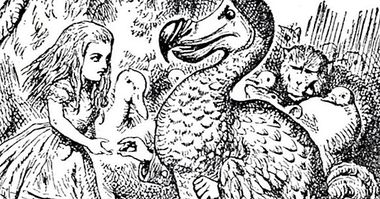Contradiction: therapeutic uses of this technique
Counterconditioning was one of the most significant techniques in the development of psychotherapy, especially for its pioneering use in the treatment of phobic anxiety. Even though Mary Cover Jones was the first to use counterconditioning With this objective, it was Joseph Wolpe who popularized it within the framework of systematic desensitization.
In this article we will describe the therapeutic uses of counterconditioning in phobias and addictions ; in relation to these we will speak respectively of systematic desensitization and aversive counterconditioning. To begin with, we will briefly dwell on the definition of this concept and its historical course.
- Related article: "5 behavior modification techniques"
What is counterconditioning?
Counterconditioning is a psychological technique developed from behavioral guidance that consists of eliminate an unwanted response and replace it with another more appropriate by using pleasant stimuli. It is applied with some frequency to treat irrational fears both in humans and animals, as well as addictions.
In this procedure the person is exposed to the stimulus that is wanted to contradict, and that provokes an inappropriate response, while another stimulus of opposite sign is also present. Thus, to make a phobic object less scary, it could be associated with a relaxation response, such as Jacobson's progressive muscle relaxation.
Similarly, in many cases of alcoholism, drugs such as disulfiram are prescribed, which when combined with this beverage causes nausea, tachycardia and other unpleasant sensations. This makes alcohol less palatable, so that drinking behavior is counterconditioned when associated with these physiological alterations.
A similar concept is extinction, which is part of the paradigm of operant conditioning. The difference is that the procedure of the extinction is to eliminate a response by removing the reinforcement that previously it was contingent to its execution, and not in replacing said behavior by another one, as it happens in the counterconditioning.
Historical development of this technique
In the year 1924 Mary Cover Jones used counterconditioning for the first time in the treatment of phobia in the famous case of little Peter, a boy with fear of rabbits. This researcher was the first to demonstrate the efficacy of the technique under reliable experimental conditions.
Cover Jones used a nice meal for Peter as a substitute stimulus. In the first place the child ate in the same room where a rabbit was, although it was at a significant distance. Progressively, the animal approached little Peter; In the end the child was able to caress him without showing any anxiety response.
The case of little Peter was a key milestone in the emergence of behavioral therapy. Later Joseph Wolpe, who developed the technique of systematic desensitization in the 1950s using counterconditioning as a basis, she would refer to Mary Cover Jones as "the mother of behavior therapy."
- Maybe you're interested: "Addiction: disease or learning disorder?"
Role in systematic desensitization
Systematic desensitization is a technique that aims to reduce or eliminate anxiety and avoidance responses that occur in the presence of a phobic stimulus. It is based on the performance of behaviors incompatible with anxiety to replace it because, in the words of Wolpe himself, it is not possible to be relaxed and nervous at the same time.
In particular, Wolpe used the progressive muscle relaxation technique developed by Edmund Jacobson as an incompatible response. However, it is not a necessary component, but could be replaced by another method of relaxation, such as slow and deep breathing, or any response that is not compatible with anxiety.
Even though Wolpe attributed the utility of systematic desensitization to counterconditioning of opposite responses to anxiety, subsequent authors have questioned this hypothesis. Thus, it has been proposed that the basis of this technique may be habituation, extinction, expectation or operative reinforcement of approaching responses.
In any case, systematic desensitization has lost popularity in recent decades due to the improvement of live exposure techniques, which have greater empirical support and are more efficient to treat irrational fears, being based fundamentally on contributions of scientific research.
The aversive counterconditioning
The goal of aversive conditioning is that the subject happens to associate an undesired behavior with an unpleasant stimulus so that it loses its value as a reinforcer. In the case of aversive counterconditioning this is achieved by matching the behavior that is intended to be eliminated with stimuli that provoke opposite responses to those of pleasure.
The most usual application of this technique is framed in the context of Aversion therapy for substance addiction like alcohol, tobacco, cannabis or cocaine. The consumption of the drug in question is identified with unwanted behavior, while the stimuli are usually other substances that react negatively to the first.
In the case of alcohol, as we have previously said, aversive therapies are used that consist of the consumption of drugs that, when interacting with alcohol in the body, cause unpleasant physiological responses, mainly related to the digestive system. The two most commonly used drugs in this regard are naltrexone and disulfiram.
It has also been used successfully aversive therapy of electrical stimulation to treat the consumption of tobacco, marijuana and cocaine. On the other hand, compulsive habits such as onychophagia (biting the nails) or trichotillomania (tearing the hair) can also be eliminated with aversive counterconditioning, although there are more tolerable procedures.
Bibliographic references:
- Cover Jones, M. (1924). A Laboratory Study of Fear: The Case of Peter. Pedagogical Seminary, 31: 308-315.
- Rutherford, A. (2010). Profile of Mary Cover Jones. In A. Rutherford (Ed.), Psychology's Feminist Voices Multimedia Internet Archive. Recovered from //www.feministvoices.com/mary-cover-jones/
- Wolpe, J. (1969), The Practice of Behavioral Therapy. New York: Pergamon Press.



















